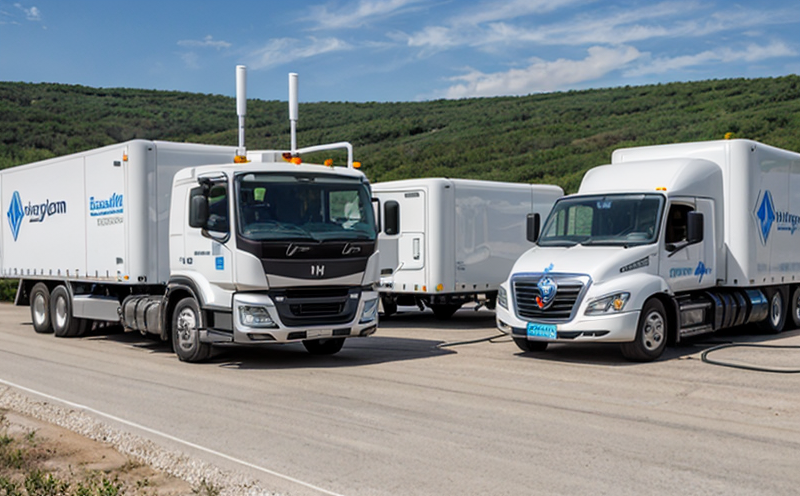ASME B31.12 Hydrogen Piping and Pipeline Testing
The ASME B31.12 Hydrogen Piping and Pipeline Testing service ensures the integrity of hydrogen piping systems in accordance with ASME (American Society of Mechanical Engineers) standards, specifically focusing on the requirements outlined within ASME B31.12-2020. This standard is critical for ensuring safety, compliance, and reliability in high-pressure hydrogen systems used across various sectors including renewable energy, chemical processing, and transportation.
Hydrogen piping and pipelines are subject to unique stressors and potential failure modes due to the highly reactive nature of hydrogen gas. ASME B31.12 provides detailed guidelines for material selection, design, construction, inspection, testing, and operation of these systems. Testing is performed at specified pressures as defined in the standard to validate that the piping meets or exceeds all required performance parameters.
The testing process involves several stages including hydrostatic testing, leak detection using helium, and visual inspections. Hydrostatic testing ensures the system can withstand pressure without leaking or deforming. Helium leak testing confirms there are no leaks at critical points. Visual inspections ensure the integrity of welds and connections.
This service is essential for industries where hydrogen plays a key role in their operations, such as renewable energy production facilities (e.g., electrolyzer plants), fuel cell manufacturing plants, and hydrogen transport infrastructure. Compliance with ASME B31.12-2020 ensures that these systems are safe and reliable, reducing the risk of catastrophic failures.
The service also involves detailed reporting tailored to meet regulatory requirements and internal quality control standards. Reports document all aspects of testing including pressure levels achieved, leak detection results, visual inspection findings, and any deviations from standard specifications.
Understanding the scope and requirements of ASME B31.12 is crucial for industries that must handle hydrogen piping systems. This service ensures that these complex systems are designed, constructed, and operated in accordance with recognized industry best practices and regulatory standards.
| Test Parameter | Description |
|---|---|
| Hydrostatic Test Pressure | The maximum pressure at which the piping is tested to ensure structural integrity. |
| Helium Leak Testing Sensitivity | The level of sensitivity required to detect leaks, typically measured in parts per million (ppm). |
Understanding these parameters and how they contribute to the overall safety and reliability of hydrogen piping systems is paramount for ensuring compliance with ASME B31.12-2020.
Why It Matters
The importance of hydrogen as a clean energy carrier cannot be overstated, especially in the context of renewable energy and decarbonization efforts. Hydrogen piping systems are integral to this transformation, playing critical roles in electrolyzer plants, fuel cell operations, and transportation infrastructure. Ensuring these systems meet stringent safety standards is vital for preventing accidents that could endanger lives and cause environmental damage.
The ASME B31.12 Hydrogen Piping and Pipeline Testing service addresses key aspects of this challenge by providing comprehensive testing that validates the integrity of hydrogen piping systems. This includes hydrostatic tests, helium leak detection, and visual inspections to ensure compliance with the latest ASME standards.
By adhering to these stringent testing protocols, industries can build trust in their infrastructure, ensuring reliability and safety for end-users. This is particularly important given the growing demand for hydrogen as a key component of sustainable energy solutions worldwide.
The service also supports ongoing compliance with regulatory requirements, which are essential for maintaining operational permits and avoiding costly fines or delays. By partnering with experienced laboratories that offer this testing service, organizations can ensure they meet all necessary standards and regulations.
Applied Standards
| Standard Name | Description |
|---|---|
| ASME B31.12-2020 | Hydrogen Piping and Pipeline Design, Construction, Inspection, Testing, and Operation. |
| ISO/IEC 8578:2019 | Pressure Vessels and Components for Hydrogen Service - Specification for Use in the Production of Hydrogen from Water Electrolysis. |
The ASME B31.12-2020 standard provides detailed guidelines for the design, construction, inspection, testing, and operation of hydrogen piping systems. It covers a wide range of topics including material selection, pressure vessel specifications, and safety criteria. The ISO/IEC 8578:2019 standard complements this by offering additional requirements specifically related to the production of hydrogen from water electrolysis.
By adhering to these standards, organizations can ensure that their hydrogen piping systems are safe, reliable, and compliant with international best practices. This is crucial for maintaining operational permits and avoiding costly penalties associated with non-compliance.
Why Choose This Test
The ASME B31.12 Hydrogen Piping and Pipeline Testing service offers several key advantages over other testing methods:
- Comprehensive Compliance: Ensures complete compliance with the latest ASME B31.12-2020 standard.
- Enhanced Safety: Provides robust validation of system integrity, reducing the risk of leaks and failures.
- Regulatory Approval: Supports ongoing compliance with regulatory requirements, ensuring operational permits are maintained.
- Informed Decision-Making: Detailed reports provide comprehensive insights into the condition and performance of hydrogen piping systems.
The service is particularly valuable for organizations involved in renewable energy projects, chemical processing facilities, and fuel cell manufacturing plants. By choosing this test, these organizations can ensure their hydrogen piping systems are safe, reliable, and compliant with international best practices.
Furthermore, the service supports ongoing safety audits and provides a clear path to regulatory compliance, ensuring that operations remain in line with the latest standards and requirements.





